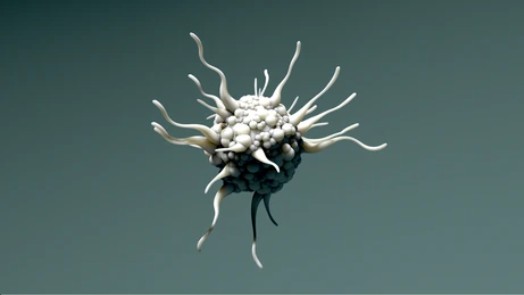Dendritic Cell ITIM/ITAM Immunoreceptors
Related Symbol Search List
- CD22
- CD300C
- CD300E
- CD300LF
- CD33
- CLEC5A
- SIGLEC10
- SIGLEC11
- SIGLEC14
- SIGLEC5
- SIGLEC6
- SIGLEC7
- SIGLEC8
- SIGLEC9
- SLAMF8
- TREML1
- CD300A
- Dectin-1
- CD300LB
- CLEC1A
- CLEC4A
- CD32A
- CD16a
- FCGR3B
- LAIR1
- LILRB1
- ILT4
- LILRB3
- LILRB4
- LILRB5
- PILRA
- SIRPB1
- SLAMF7
Immunology Background
Available Resources for the Study of Dendritic Cell ITIM/ITAM Immunoreceptors
- Our team at Creative BioMart specializes in providing a wide range of products related to dendritic cell ITIM/ITAM immunoreceptors research, including recombinant proteins. We have a team of experts who possess extensive knowledge and expertise in this field and are dedicated to offering personalized solutions to meet the specific requirements of each researcher.
- In addition to our products, we also offer a comprehensive collection of resources to support your research on dendritic cell ITIM/ITAM immunoreceptors. These resources include detailed information on the involved pathways, protein functions, interacting partners, research articles, and other relevant information.
Whether you are looking for diverse products, tailored solutions, or scientific resources, Creative BioMart is your one-stop shop for all your dendritic cell ITIM/ITAM immunoreceptors-related research needs.
Our Featured Products
- Active Recombinant Human CD22 protein, Fc-tagged
- Recombinant Human CD300C, His tagged
- Recombinant Human CD33, GST-tagged
- Recombinant Human CD33 Protein, Fc-tagged, FITC conjugated
- Recombinant Human CLEC5A, His-tagged
- Recombinant Human SIGLEC14 protein, His-tagged
- Recombinant Human SIGLEC5 Protein, hIgG-His-Tagged
- Recombinant Human SIGLEC6, Fc tagged
- Recombinant Human SIGLEC8, His-tagged
- Recombinant Human SIGLEC9, GST-tagged
- Recombinant Human SLAMF8, His-tagged
- Recombinant Human TREML1, His-tagged
- Recombinant Human CD300A, His tagged
- Recombinant Human CLEC7A, His-tagged
- Recombinant Mouse Clec7a protein (Phe69-Leu244), His-tagged
- Recombinant Human CD300LB, GST-tagged
- Recombinant Human CLEC4A, His tagged
- Recombinant Human FCGR3B protein, His-tagged
- Recombinant Human LAIR1 protein, His-Avi-tagged, Biotinylated
- Recombinant Human LILRB1 protein, His-tagged
- Recombinant Human LILRB3 protein (Met1-Glu443), His-tagged
- Recombinant Human LILRB4, His-tagged
- Active Recombinant Human LILRB4 protein, His-Avi-tagged, Biotinylated
- Recombinant Human SIRPB1 Protein, His-tagged
- Recombinant Human SLAMF7 protein, hFc-tagged
- Recombinant Human SLAMF7 Protein, Fc-tagged, Alexa Fluor 555 conjugated
If you have any questions, requirements, or cooperation intentions, please feel free to contact us. We very much look forward to working with you and helping you achieve research and commercial success.

About Dendritic Cell ITIM/ITAM Immunoreceptors
Dendritic cells (DCs) are key players in the immune system, involved in antigen presentation and immune regulation. They express a variety of immunoreceptors on their surface, including those possessing immunoreceptor tyrosine-based inhibitory motifs (ITIMs) and immunoreceptor tyrosine-based activation motifs (ITAMs). These receptors play important roles in modulating DC functions and immune responses. Here's an introduction to dendritic cell ITIM/ITAM immunoreceptors:
- ITIM-Containing Immunoreceptors: ITIMs are short amino acid sequences found in the cytoplasmic tails of certain immunoreceptors. These immunoreceptors, such as paired immunoglobulin-like receptor A (PIR-A) and leukocyte immunoglobulin-like receptor B (LILRB), contain one or more ITIMs. When these receptors are engaged by their ligands, ITIMs become phosphorylated, leading to the recruitment of phosphatases that inhibit signaling pathways.
- Inhibitory Signaling: Upon ligand binding, ITIM-containing immunoreceptors transmit inhibitory signals that dampen immune responses. The recruited phosphatases, such as SHP-1 and SHP-2, dephosphorylate key signaling molecules, resulting in the attenuation of downstream signaling events. This negative regulation helps prevent excessive immune activation and maintain immune homeostasis.
- Immune Tolerance and Autoimmunity: ITIM-containing immunoreceptors on dendritic cells play a crucial role in promoting immune tolerance and preventing autoimmune responses. By delivering inhibitory signals, these receptors regulate the activation and function of DCs, preventing aberrant immune responses against self-antigens. Dysregulation of ITIM signaling has been associated with autoimmune diseases, highlighting the importance of balanced inhibitory signaling in maintaining immune tolerance.
- ITAM-Containing Immunoreceptors: In contrast to ITIM-containing receptors, ITAM-containing immunoreceptors transmit activating signals upon ligand binding. These receptors, such as Fc receptors and C-type lectin receptors, possess ITAMs that become phosphorylated upon receptor aggregation. This phosphorylation leads to the recruitment of signaling molecules, such as spleen tyrosine kinase (Syk), initiating downstream signaling cascades.
- Activation of Immune Responses: ITAM-containing immunoreceptors on dendritic cells play a role in activating immune responses. Upon engagement with their ligands, these receptors initiate signaling pathways that promote DC maturation, cytokine secretion, antigen presentation, and the activation of other immune cells. This activation is crucial for the initiation of adaptive immune responses against pathogens or tumors.
- Coordinated Signaling: Dendritic cells often express both ITIM-containing and ITAM-containing immunoreceptors, allowing for a delicate balance of inhibitory and activating signals. This balanced signaling is important for fine-tuning immune responses and regulating the threshold of DC activation. The interplay between ITIM and ITAM signaling influences the outcome of immune responses and helps maintain immune homeostasis.
- Modulation of Immune Cell Interactions: ITIM/ITAM immunoreceptors on dendritic cells can modulate interactions with other immune cells. Through inhibitory or activating signaling, these receptors can influence the strength and duration of immune cell interactions, affecting processes such as T cell activation, differentiation, and cytokine production.
In summary, dendritic cell ITIM/ITAM immunoreceptors are important regulators of immune responses. ITIM-containing receptors transmit inhibitory signals that modulate DC activation and prevent autoimmune responses while ITAM-containing receptors transmit activating signals that promote immune activation and antigen presentation. The balance between inhibitory and activating signaling through these immunoreceptors is crucial for immune homeostasis and the regulation of immune responses.
References:
- Billadeau DD, Leibson PJ. ITAMs versus ITIMs: striking a balance during cell regulation. J Clin Invest. 2002;109(2):161-168. doi:10.1172/JCI14843
- Hirsch I, Janovec V, Stranska R, Bendriss-Vermare N. Cross Talk between Inhibitory Immunoreceptor Tyrosine-Based Activation Motif-Signaling and Toll-Like Receptor Pathways in Macrophages and Dendritic Cells. Front Immunol. 2017;8:394. Published 2017 Apr 7. doi:10.3389/fimmu.2017.00394

